GALAPAGOS SEA LION

SOLEQMASTER
The Galapagos Islands are one of the most biodiverse places in the world and were the basis for Charles Darwin’s theory of evolution. In addition to the Galapagos giant tortoises, which give the islands their name, you will see plenty of different species of iguanas. From the unique marine iguanas to the large land iguanas and the small fast moving lava lizards. What will also enrich your trip to the Galapagos Islands in any case are the sea lions. You can see them for example in action during a dive underwater. You may also see one of these mammals lying next to you on one of the public benches or sleeping on the beach. There are many opportunities to observe sea lions on Galapagos.
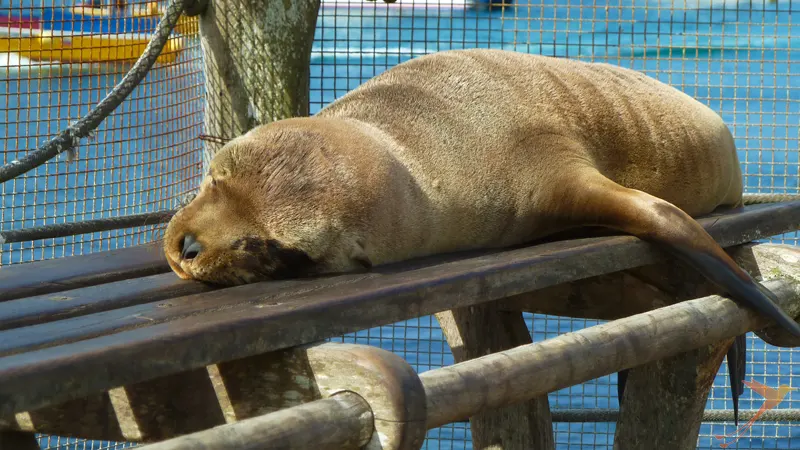
The Galapagos sea lion, with more than 50,000 conspecifics, is considered a typical species for the archipelago. Characteristic of this species are its whiskers and its elongated and pointed snout, which distinguishes it from other sea lions. The males reach a length of 250 to 270 cm with a weight of about 250 kg. The females, on the other hand, are much smaller and lighter, with a length of 150 to 170 cm and a weight of 60 to 100 kg. Their fur has a golden-gray-brown coloration, although that of females and young tends to be lighter. Another point of distinction between females and males is also that the latter have a forehead crest.
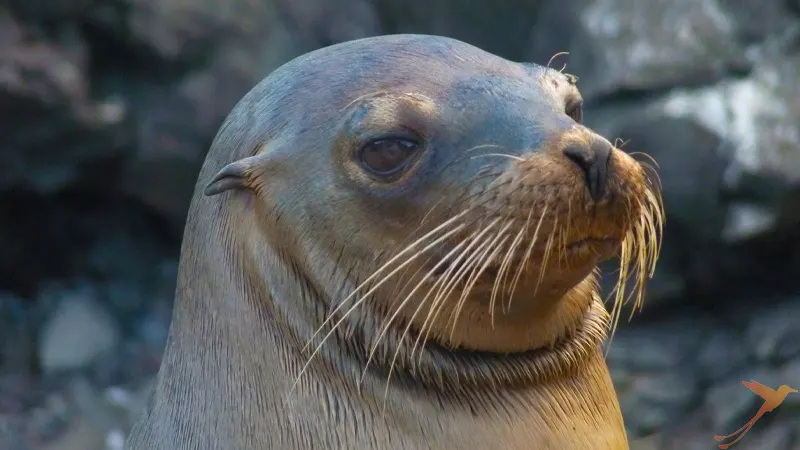
The sea lions’ fins do not appear very strong at first glance, but this impression is deceiving. The fins allow fast swimming and diving in the water and on land the sea lions can move fast, so they can even be faster than humans depending on the ground conditions.
habitat, diet and reproduction
The animals can be found on all Galapagos islands throughout the year. However, for about 30 years they have also settled outside Galapagos, on the islands of Isla de la Plata towards the coast of Ecuador and on Isla del Coca about 500 km southwest of Costa Rica. They live close to the shorelines and feed on small to medium-sized bony fish and mollusks, which include tuna and squid. To search for and catch their prey they dive between 30 and 40 meters deep, the length of a dive can last up to ten minutes.
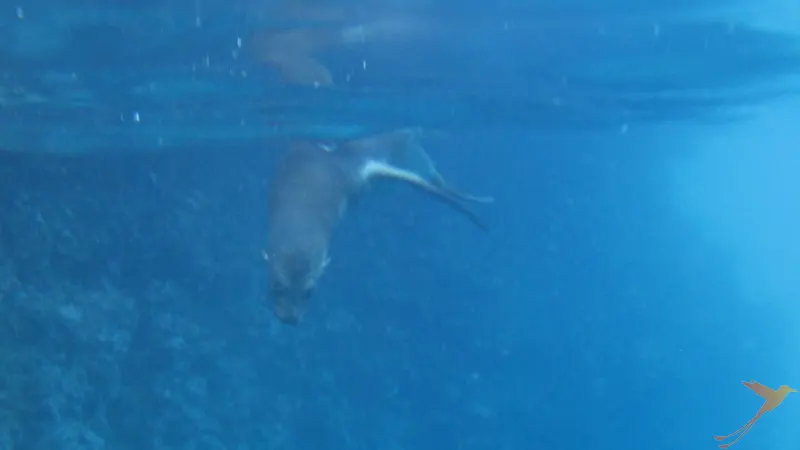
Furthermore, female Galapagos sea lions live together with a bull, the other males live among themselves. So, there are bachelor colonies on the one hand and harem colonies on the other. Since the male sea lions living in the bachelor colony also have the desire to reproduce, no attempt is left out to invade the harem colony and mate with a female sea lion. Such an attempt is resisted by the harem by pushing and biting. Due to the extremely demanded attention of the harem, there is no time for foraging, which makes the bull weaker and already after up to 2 weeks it can no longer defend its position and a new sea lion is the harem of the colony.
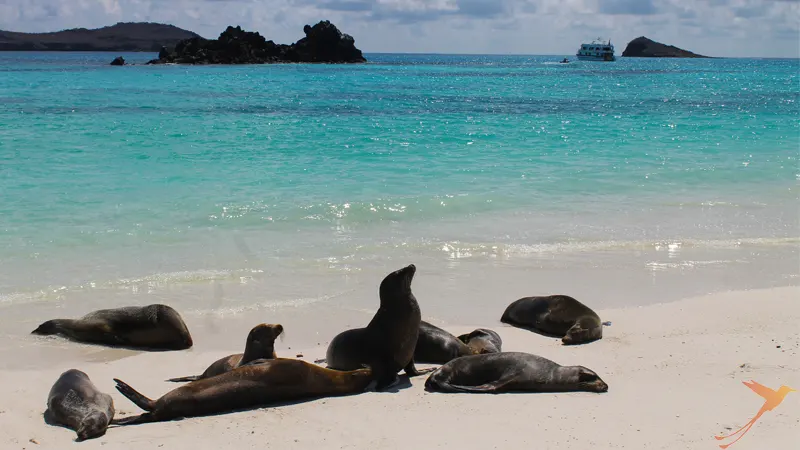
The mating season lasts from May to January and the females are subsequently pregnant for 342 to 365 days. Galapagos sea lions give birth to one cub, which is carried in the summer months through November. After only one to two weeks, the cubs learn to swim. After only a few weeks, the females mate again and go hunting, but they always return to their young to care for them. For up to three years, mothers and their young have a very close bond.
threat
As mentioned earlier, the population of Galapagos sea lions can currently claim up to 50,000 individuals. These numbers seem to be extremely high, but nevertheless the sea lions are considered endangered. A direct threat is posed by the El Niño effect, the decline in fish populations, the Galapagos shark, the killer whale, and stray dogs. In addition, in recent years there has also been an outbreak of a smallpox virus and increased stress in foraging. In the meantime, however, the species has recovered, but it has nevertheless been on the IUCN Red List since 1996 and is classified as endangered. Plastic waste is also becoming an increasing problem, as the trash floating in the sea is easily mistaken for food. For this reason, the animals eat the plastic waste, which can eventually sicken and kill them. Towards humans they are very trusting, which is helpful for exploration and for great experiences, but it is still questionable whether the proximity to tourists can be dangerous for them.
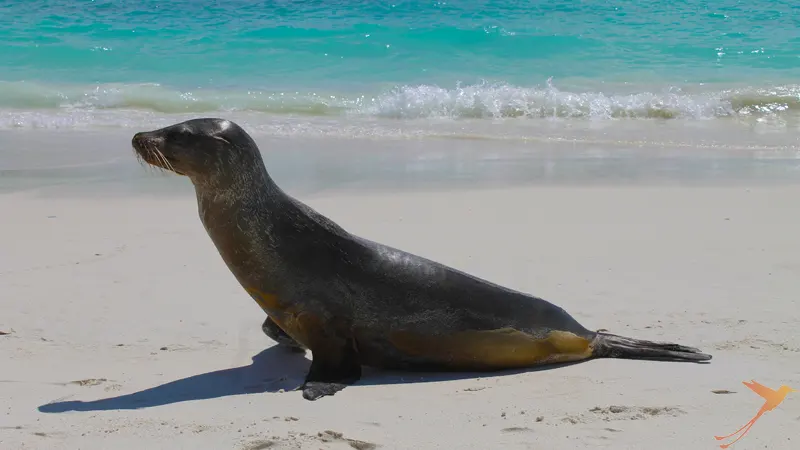
The Galapagos Islands are worthy of protection due to their unique flora and fauna and are considered a fragile territory. Traveling there requires responsible behavior so that the creatures there can reproduce and continue to exist. SOLEQ.travel enables the connection between unforgettable experiences and sustainable travel. Come with
us to the islands, let our experienced guides explain the island to you and
enjoy the adventure Galapagos!
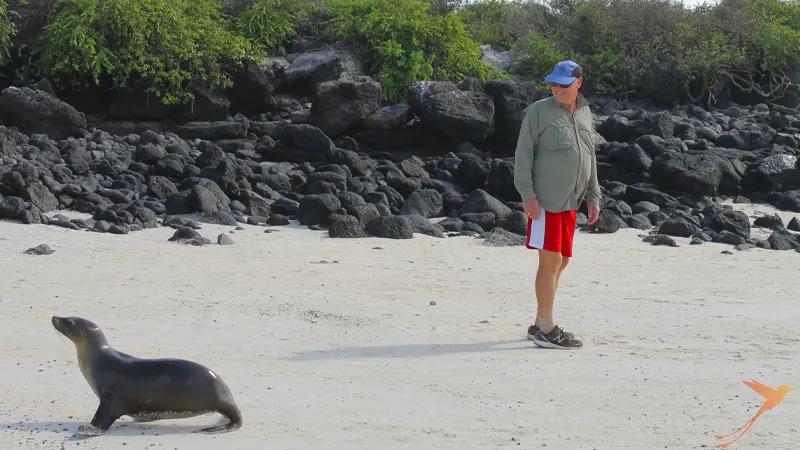
visit our other channels
Recent Posts
- Excursions within the rainforest region of Ecuador April 5, 2024
- Ecuador in a state of emergency?! My personal experience March 22, 2024
- The 10 most beautiful lakes and lagoons in Ecuador – Part 2 March 12, 2024
- The 10 most beautiful lakes and lagoons in Ecuador – Part 1 February 23, 2024
- Cuyabeno – 3 days in the jungle of Ecuador February 9, 2024